

Table of contents
- Identify diatoms
- Find out the causes of diatoms
- Combat diatoms
- Manual removal
- Reduce silica levels
- Reduce phosphate content
- prevention
- Conclusion
The problem often resolves itself once the silicate has been used up. Since fresh water is constantly adding new silicate, there can always be problems with these algae.
Identify diatoms
Diatoms can be recognized by a brownish, greasy coating on the substrate, on objects, on windows and especially on plants. This coating is often interspersed with oxygen bubbles. Diatoms are sometimes referred to as brown algae because of their brown colour, but this is not correct. Diatoms form a silicate shell. To do this, they need silica.
A few steps are necessary to successfully combat diatoms. First of all, the causes of the infestation must be found, because combating it depends on where it comes from. The causes must be eliminated.
Find out the causes of diatoms
Diatoms often occur in newly set up aquariums. This is because the bacterial cultures have not yet developed sufficiently and the new plants are not really growing. Another criterion for appearance is light. Diatoms don't like it that bright, they prefer the shade of plants and rather poorly lit tanks.
However, the main reason for their growth is an oversupply of nutrients in the water. Silicic acid is mainly present in fresh water. Over time, this is transformed into SiO2. This can no longer be used by the algae. This explains why the algae disappear on their own after a while. In new aquariums this process takes longer, in older ones it happens faster. This is also the reason why adding silica when changing the water hardly matters.
A high phosphate value also plays a major role in the spread of diatoms. Almost all types of algae like phosphate, and diatoms are no exception. If there is too much phosphate in the water, diatoms will form even in well-established aquariums. Sparse vegetation and quite hard water are also triggers.
- Test water values – take steps to avoid exceeding them
- Check lighting, possibly too little light available, give more light
- Check care measures, carry out cleaning if necessary
Combat diatoms
There are different ways to get rid of the diatoms. One is often not enough. It is usually the sum of measures. Of course, the conditions must be changed so that the algae can no longer find food.
Manual removal
Diatoms can be easily wiped off smooth surfaces. It doesn't matter whether it's panes, objects or plants, wiping is enough. An aquarium blade is suitable for the slices. On the ground it gets more complicated. Here the algae should be sucked off, simply with a hose, right after the water change. The affected layers can also be washed out, but this is complicated and time-consuming.

After cleaning, the water should be changed to a large extent in order to remove the remains and algae parts floating in the water from the aquarium.
Reduce silica levels
If you set up a new aquarium, you should not use the tap water pure. It is better to mix it with osmosis water. Osmosis water is created when tap water is pressed through a membrane under high pressure. It is an intensive filtering process in which all components are removed from the water, including the minerals. In order to produce osmosis water, a filter or a filter system is required. Whether it's worth it just to "clean" the water in the aquarium, everyone has to decide for themselves. However, these filters are now found in many households.
If you already own an aquarium and the water there is free of diatoms, you can take water from it and put it in the new tank. It is then mixed with regular tap water. This accelerates the running-in of the new aquarium, since the silica can convert more quickly. The algae are deprived of food.
- Water changes of 25 to 50 percent
Reduce phosphate content
Algae usually only appear from a phosphate content of 0.25 mg per liter of water. Sometimes such high levels occur in drinking water. Then reverse osmosis water is really a good choice, at least for the aquarium. If it's not the fresh water that's causing the high levels, then the reason needs to be found. There are different causes. Often there are simply too many fish in the tank. These ensure high values through their droppings. In addition, they are often overfed. Food is nutritious. It sinks to the bottom and decomposes over time. This is how the nutrients are released. Fast-growing plants help lower the values. They should be plentiful in the aquarium.
If it is not enough to reduce the fish stock and the amount of food, add plants and increase the lighting strength, phosphate binders can help. They are commercially available in large numbers. It is important to follow the dosage instructions and to choose a remedy that is as natural as possible.
- Exchange water, 25 to 50 percent
- Check fish population, remove fish if necessary
- Check feed amount. Anything the fish have not eaten within 10 minutes is too much. So feed less
- Use fast-growing aquatic plants
prevention
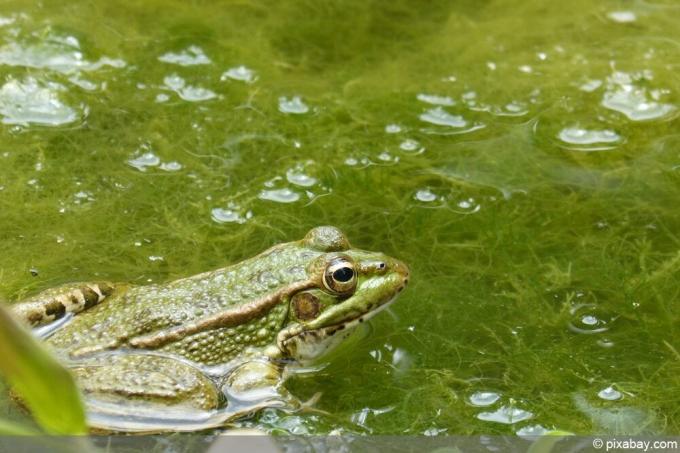
A number of things can be done to prevent this, starting with choosing the most favorable location, choosing a few inhabitants, and using numerous ones suitable plants, the operation of a suitable filter, the ideal lighting, regular water changes, frequent checking of the water values and the Cleaning. Mouth-sucking fish are e.g. B. hard-working helpers in fighting diatoms.
Location not too dark, but never in the sun, this promotes other algae
fish stock - not too many fish other residents. A lot of fish - a lot of excrement. There are also special types of fish that bring a particularly large number of nutrients into the water through their droppings. Specialist shops can certainly help with that.
plant stock – the more plants, the more nutrients are used for growth. These are no longer available to the algae.
filter – Appropriate filters clean the aquarium water
lighting – try slightly brighter light, but no more than 10 to 12 hours, otherwise other types of algae will be encouraged
water change – With normal operation, a water change every two to three weeks is sufficient. If algae appear, remove water and add new water weekly. Think about an osmosis filter.
Check water values – not only in emergencies, but regularly. In this way, deviations are noticed in good time and countermeasures can be taken
cleaning – Also clean with every water change
Conclusion
Diatom infestation often occurs after a short time in newly created aquariums. That's nothing to worry about. There is no need to intervene either. This will go away after a few weeks, then the diatoms will have used up the silicate and will die without food. Although new silicate is added when the water is changed, once the pool has settled in, this is no longer a problem. If there is an increased infestation of diatoms during operation, it must be checked why this is happening. Often there is not enough light. This deficiency can easily be remedied. It is a bit more complicated when there is an oversupply of nutrients. Then the conditions have to be changed so that they are reduced.
 garden editorial
garden editorial I write about everything that interests me in my garden.
Learn more about algae in the pond
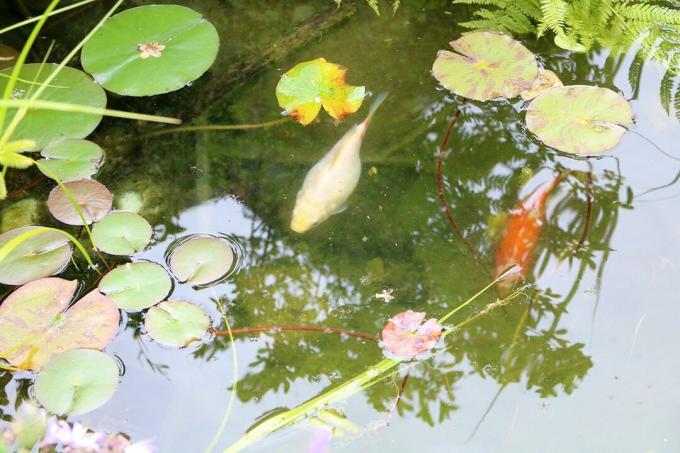
Floating algae in the pond: 10 tips for removing them
Algae infestation is not only unsightly to look at, but can also pose a threat to aquatic animals and plants. For this reason, it is advisable to always remove floating algae - read here how this works best!
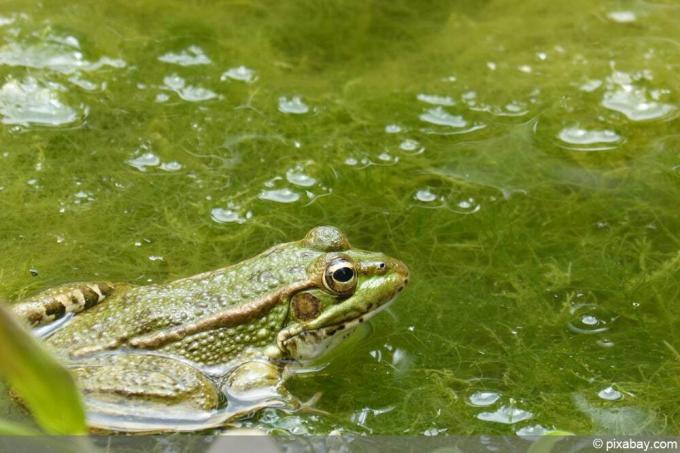
Algae eater in the pond: 5 hungry pond fish
Algae growth in the garden pond not only looks unsightly, but excessive growth can tip the entire ecosystem over. In this article we will tell you which types of fish, snails and mussels like to eat algae and what else helps against the "green plague".
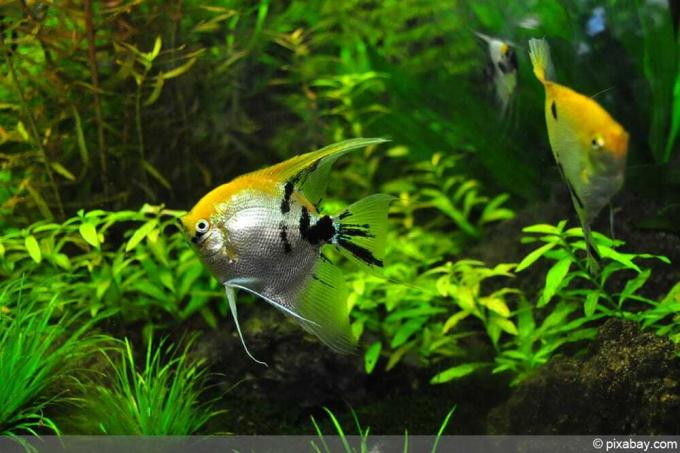
Combat thread algae in the aquarium
The right countermeasures must be taken at an early stage to ensure that the thread algae in the aquarium do not grow too rampant and become a nuisance. Otherwise, the aquatic plants can severely disturb the sensitive ecosystem of the aquarium and also negatively affect the visual appearance.
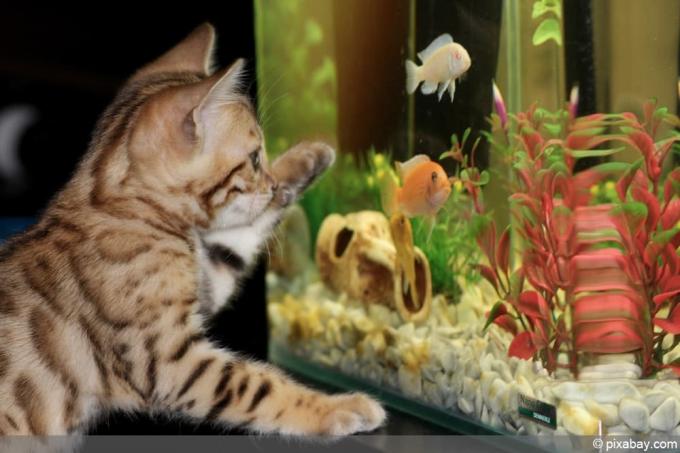
Get rid of green algae in the aquarium properly
Green algae occur in every aquarium. This is normal and part of it. It can even speak for a particularly good water quality. Only a massive increase in algae caused by too much light and too many nutrients is not normal. The green coloring and turbidity of the water means nothing other than that the biological balance has gotten out of joint. There are different green algae, also with quite different requirements. However, all benefit from an excess of food and can best be combated by depriving them of food.

Natural remedies against thread algae
Algae in the garden pond are an absolute nuisance, but can hardly be avoided. Besides, they are useful too. They serve as food for microorganisms and also produce vital oxygen. It gets annoying when they multiply en masse.

The best home remedies for algae in the aquarium
Algae in the aquarium are absolutely natural and normally do not have to be fought. It only becomes difficult when they multiply explosively. There is a reason for this increase. It has to be found and turned off. That sounds simple, but it isn't.
